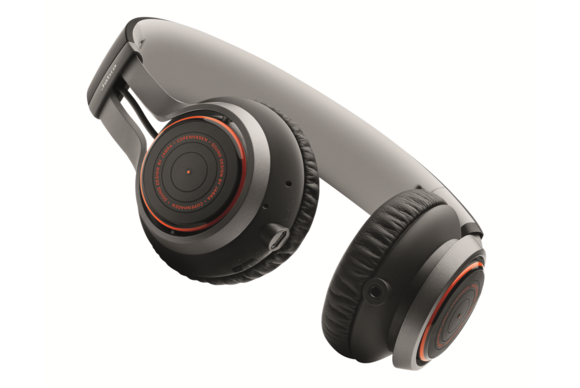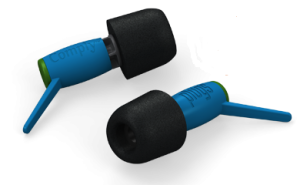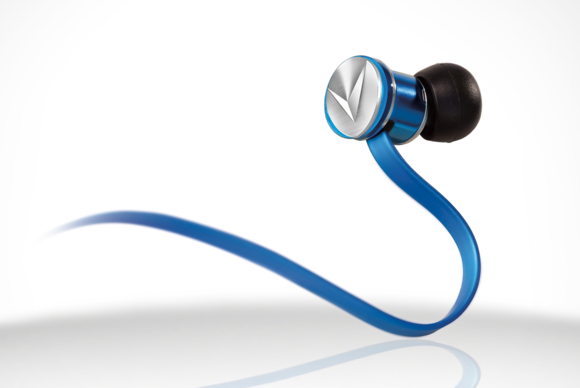
But the variety of styles and options is wider than ever, and the opportunities for in-person testing are fewer. To help you find the perfect set of headphones, here is this year’s version of our annual buying guide: what to look (and listen) for, descriptions of the different types of headphones, and specific recommendations, whether for yourself or for the lucky recipient of your generosity.
What to look for when shopping
Unlike with speakers, headphones don’t differ much on features—you plug them in, put the earpieces on (or in) your ears, and listen. (One exception, covered below, relates to remote/headset functionality.) For the most part, the main differences between models are type, comfort, and sound quality. I explain the different types of headphones later in this article, but here are a few things to keep in mind when shopping.Specs and sound quality: You should generally ignore manufacturers’ specifications—especially frequency-response numbers. No standard testing methodology exists for headphone frequency response, and many vendors exaggerate their specs for marketing reasons. Plus, even if the specs were accurate, they wouldn’t tell you much about how a particular set of headphones actually sounds. Instead of reading specs, use your ears. (If you can’t audition a product in person, read reviews from a source you trust.)
A quality set of headphones reproduces audio with good balance between treble (upper), midrange, and bass (lower) frequencies, producing full, rich sound while preserving detail. However, because of their especially small drivers (speakers), headphones present a unique challenge when it comes to bass response: Unlike huge speaker woofers that you can not only hear, but feel, the drivers in most headphones can’t reproduce the visceral impact of low bass—you may be able to hear the lowest frequencies, but you probably won’t be able to feel them.
I point out this bass issue because some companies attempt to address it by emphasizing certain bass and upper-bass frequencies to give their headphones more “kick.” This helps the headphones stand out from other headphones in the store, and some people—especially those who use their headphones while exercising or for beat matching—really want that exaggerated impact. But such headphones often become fatiguing to listen to over time. If you’re interested in accurate audio reproduction, be careful not to be wowed by emphasized bass. (The same goes for exaggerated treble detail.)

Fit and comfort: Unlike most consumer-electronics devices, you actually wear headphones. So how well a set of headphones fits you—your head, your ears, and even your ear canals—plays a significant role in your long-term satisfaction (or lack thereof). I include a few comfort-related tips when describing the different types of headphones, but, again, reading about a particular style is no substitute for actually giving a product a test drive (or a test run, as the case may be for fitness-oriented models).
Headset functionality and inline control modules: Many headphone models include, right on the cable, an inline module with a microphone and one or more buttons, much like the inline remote on Apple’s iPhone earbuds. At minimum, this remote features a single multifunction button for controlling media playback; making, taking, and ending phone calls; and taking advantage of voice-control features. The module’s microphone can be used to talk on the phone, make voice recordings, dictate, and speak commands to Siri, Google, or other voice-control software. Models aimed at iPhone, iPad, and iPod users generally include a three-button remote with dedicated volume-up and -down buttons. This three-button remote also lets you control volume and media playback on recent Macs.
Where to buy: Sadly, fewer and fewer brick-and-mortar retailers carry quality headphones, and few of those that do actually let you try the products in the store—especially if you’re talking about in-ear-canal models. This makes it difficult to audition the sound and fit of headphones before you buy. Your best option is to purchase from a retailer with a generous return policy, so that if you’re unhappy with the way a set of headphones fits or sounds once you get it home, you can return it. This goes for both local and online retailers—for example, Internet headphone retailer HeadRoom carries a huge assortment of great headphones and offers a 30-day, no-questions-asked return guarantee, even on in-ear-canal models.
Protect your ears

Some headphones designed for kids have built-in volume limits. But you won’t find such features on traditional headphones, especially those that focus on audio quality, as the inline circuitry used to attenuate volume adversely affects the audio signal. If your audio source provides a volume limiter, use that. For example, iPhones and iPods have a Volume Limit setting (in iOS 7, it’s in Settings -> Music -> Volume Limit).
What if you find yourself in a loud environment? While some of the headphones I recommend block external noise, you won’t always be wearing your headphones, so it’s good to keep a set of earplugs handy—you never know when you’ll wind up in a too-noisy crowd, in earshot of jackhammering machines, or sitting in a movie theater with ear-splitting volume levels. Similarly, many music lovers attend concerts where the decibel level risks permanent hearing damage.
Inexpensive foam earplugs are widely available, but these work by completely obstructing your ear canals, making it difficult to hear what’s going on around you. Spend a bit more, and you can get special earplugs designed to reduce external sound to safe levels while still allowing you to hear clearly. Recommendations:
- Etymotic Research Ety-Plugs ($13)
- Comply Foam Plugs ($20)
- V-moda Faders ($20)
- Etymotic Research Musicians Earplugs (custom-fit; price varies by audiologist)
- Etymotic Research Music-Pro High Definition Electronic Earplugs (automatically adjust noise reduction based on ambient noise levels; $299)
Headphone types and recommendations
Literally thousands of headphone models are out there, varying dramatically in style, audio quality, features, and price. But nearly all of them fall into one of several main types: earbuds, in-ear-canal, canalbuds, lightweight, full-size, wireless, or noise-canceling. Below are brief descriptions of each type, along with recommendations across a range of prices. (Prices listed are MSRP; you can find many of these models at significantly lower prices.) I’ve noted which models include an inline remote/microphone module.Of course, these lists are by no means exhaustive—many quality headphones aren’t included. But the products recommended here are a good place to start, and all are efficient enough to work well directly from the headphone jack of a smartphone, tablet, media player, or computer. (I’ve also included some headphones that not only sound good but look good.)

- Apple EarPods (three-button module; $29)
- Polk Audio UltraFit 1000 (earbuds with earclips; three-button module; $50)
- Urbanears Medis Plus (three-button module; $60)
- Yuin PK2 ($79)
- Sennheiser/Adidas Sports PMX 685i (earbuds with neck band, designed for exercise; three-button module; $80)
- Bang & Olufsen EarSet 3i (earbuds with earclips; three-button module; $200)
- Moshi Clarus (earbuds with earclips; three-button module; $200)

- MEElectronics A151P (one-button module; $80)
- Etymotic Research mc3 Headset + Earphones (three-button module; $79)
- MEElectronics A161P (one-button module; $120)
- Etymotic Research hf3 Headset + Earphones (three-button module; $149)
- Nocs NS800 Monitors (three-button module; $200)
- Westone Adventure Series ADV Alpha (three-button module; $250)
- Logitech Ultimate Ears 900 (three-button module; $400)
Alternatively, if you decide to spend the big bucks on a set of high-end canalphones, I enthusiastically recommend going all-in and getting custom eartips—tips custom-made for your particular ears. The process requires an audiologist visit to get impressions taken of your ears, but the benefits include substantially better comfort; on some models, you may also gain better noise isolation and better sound quality. Many canalphone vendors offer custom eartips for $100 to $150 plus audiologist fees. (A step above custom eartips are custom in-ear monitors, which place the actual headphone circuitry in larger, custom-made earpieces.)

Interestingly, the line between canalphones and canalbuds has been blurring recently, as some canalbuds are starting to fit more like in-ear-canal models and use higher-quality components, while some canalphones are starting to fit more like canalbuds. Recommendations:
- Monoprice 9396 Hi-Fi Premium Noise Isolating Earphones ($7)
- Monoprice Enhanced Bass Hi-Fi Noise Isolating Earphones ($8; also available in white, pink, and silver)
- NuForce NE-600M (one-button module; $30)
- NuForce NE-770X ($45)
- RHA MA450i (three-button module; $50)
- Id America Spark (one-button module; $60)
- iLuv HearSay iEP515 (three-button module; $60)
- Logitech Ultimate Ears 350 Noise-Isolating Headset (three-button module; $60)
- Maximo iP-595 iMetal (three-button module; $80)
- Velodyne vPulse (three-button module; $99)
- Denon AH-C560R (three-button module; $110)
- Scosche IEM856md In Ear Monitors (three-button module; $250)

- Koss KSC75 (earclips; $20)
- Koss KSC35 (earclips; $45)
- Grado iGrado (behind-the-neck; $50)
- Koss Porta Pro (over-the-head; $50)
- Koss Porta Pro KTC (over-the-head; three-button module; $80)
- Sennheiser PX 100-IIi (over-the-head; three-button module; $90)
- Sennheiser PX 200-IIi (over-the-head; three-button module; $110)

In terms of acoustic design, full-size headphones fall into one of two categories: closed or open. Closed models block out some degree of external noise while keeping your music from disturbing others, while open models, which have a (generally deserved) reputation for offering better overall sound, let more noise in and out.
In terms of fit, full-size headphones can either completely surround your ears (the circumaural, or over-ear style) or sit on your ears (supra-aural, or on-ear). Over-ear models are larger and tend to block out more sound, but people with large ears may find on-ear models to be more comfortable than trying to squeeze those ears into the earpieces of over-ear models. Our recommendations below are divided into on-ear and over-ear lists.
Note that to reach their potential, many full-size models require more juice than you’ll get from a basic headphone jack. Those recommended here work well with the low-power headphone jacks on phones, tablets, iPods, and computers. (To expand your options to harder-to-drive models, consider a dedicated headphone amplifier or DAC/amp combo.) Recommendations:
On-ear full-size headphones
- RHA SA950i (closed; three-button module; $60)
- Beyerdynamic DT 235 (closed; $75)
- Grado SR60i (open; $79)
- Grado SR80i (open; $99)
- Sennheiser Momentum On-Ear (closed; three-button module; $230)
- V-moda Crossfade M-80 (closed; three-button module; $230)
- Bowers & Wilkins (B&W) P5 Mobile Hi-Fi Headphones (closed; three-button module; $300)
- Monoprice 8323 Premium Hi-Fi DJ Style Over-the-Ear Pro Headphone (closed; $23)
- Sennheiser HD 202 II (closed; $35)
- Shure SRH440 (closed; $99)
- Sennheiser HD 280 Pro (closed; $100)
- Sony MDR-V6 (closed; $110)
- Sony MDR-7506 (closed; $130)
- Skullcandy RocNation Aviator (closed; three-button module; $150)
- Audio-Technica ATH-M50s Professional Studio Monitor Headphones (closed; $199)
- NAD Electronics HP50 Over-Ear Headphones (closed; three-button module; $299)
- PSB M4U 1 High Performance Over-Ear Headphones (closed; one-button module; $299)
- V-moda Crossfade M-100 (closed; three-button module; $310)
- AKG K551 (closed; three-button module; $330)
- Sennheiser Momentum (closed; three-button module; $350)
- Bowers & Wilkins (B&W) P7 Mobile Hi-Fi Headphones (closed; three-button module; $400)
- Yamaha Pro 500 (closed; three-button module; $400)

You can stream audio to stereo-Bluetooth (A2DP) headphones from pretty much any recent smartphone or tablet, from many media players, from any recent Mac, and from some recent Windows PCs. You can use Bluetooth headphones with other devices by purchasing a Bluetooth transmitter, offered by a number of companies.
Most stereo-Bluetooth headphones also include a headset microphone, letting you seamlessly switch between music and voice features. And most tablets and smartphones let you control music playback using Play/Pause, Previous, and Next buttons on the headphones themselves. (The recommendations here all include such playback controls.)
Note that even though Bluetooth headphones connect wirelessly to your music source, they still require a wired connection between the left and right earpieces. For example, Bluetooth earbuds have a cable that goes behind your head. Recommendations:
- Eagle Tech Arion ARHP200BF-BR Foldable Bluetooth Headset (on-ear; $50)
- Monoprice Premium Bluetooth Hi-Fi Over-the-Ear Headphones (over-ear; $79; also available in white)
- Plantronics BackBeat 903+ (earbuds with earclips; $80)
- Plantronics BackBeat Go 2 (canalbuds; $80)
- Jabra Sport Wireless (earbuds with earclips; $99)
- JayBird Sportsband (on-ear; $99)
- MEElectronics Air-Fi Runaway AF32 (on-ear; $100)
- JayBird Freedom Sprint (canalbuds; $129)
- Sennheiser MM 100 (behind-the-neck lightweight; $150)
- Phiaton PS 210 BTNC (canalbuds with wired Bluetooth transmitter; $159)
- Jabra Revo Wireless (on-ear; $250)
- Parrot Zik (over-ear; $400)

Noise-canceling headphones are available in many of the same styles—canalbud, lightweight, full-size, and so on—as standard headphones, but I’ve found full-size models to provide the best combination of noise isolation, audio quality, and comfort. Recommendations:
- Phiaton PS 210 BTNC (canalbuds; supports both wired and Bluetooth connections; $159)
- Audio-Technica ATH-ANC7b QuietPoint Active Noise-cancelling Headphones (over-ear; $179)
- Logitech UE 6000 (over-ear; $200)
- Velodyne vQuiet Over-Ear Noise Cancelling Headphones (over-ear; three-button module; $299)
- Bose QuietComfort 15 (over-ear; three-button module; $300)
- Audio-Technica ATH-ANC9 QuietPoint Active Noise-cancelling Headphones (over-ear; $350)
- Bose QuietComfort 3 (on-ear; three-button module; $350)
- Polk Audio UltraFocus 8000 (over-ear; $350)
- PSB M4U 2 Active Noise Cancelling Headphones (over-ear; one-button module; $399)
- Parrot Zik (over-ear; supports both wired and Bluetooth connections; $400)
Source






0 comments:
Post a Comment